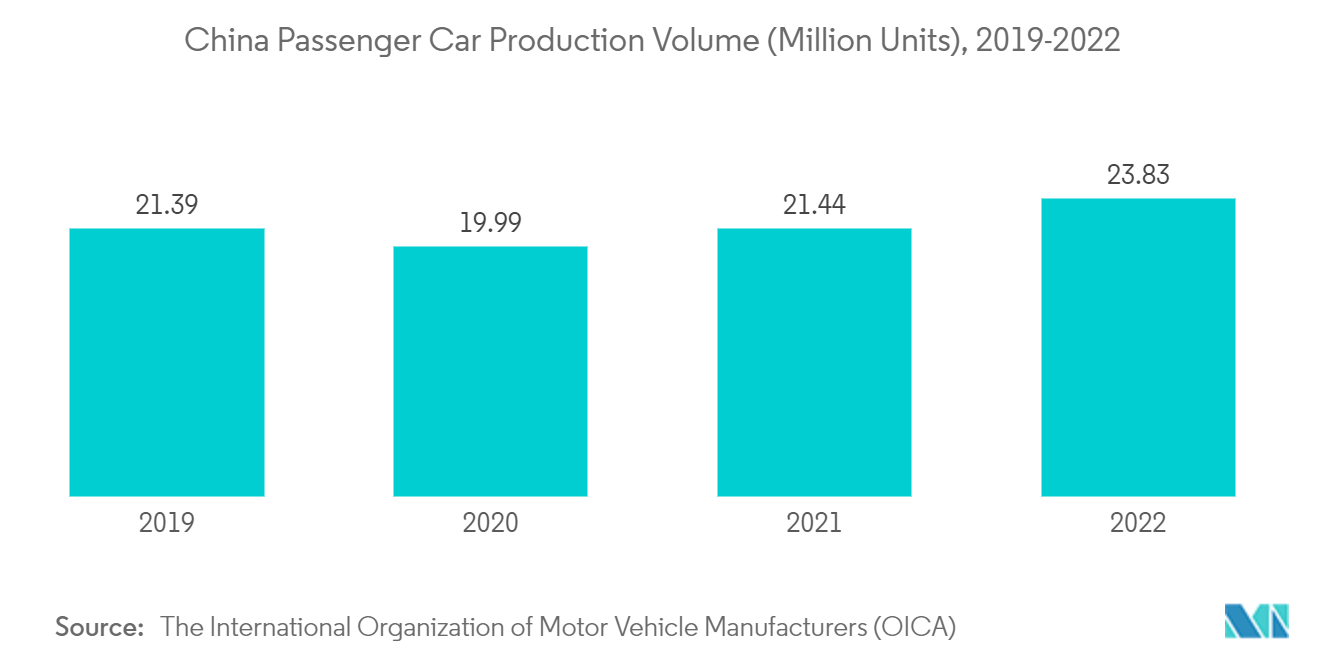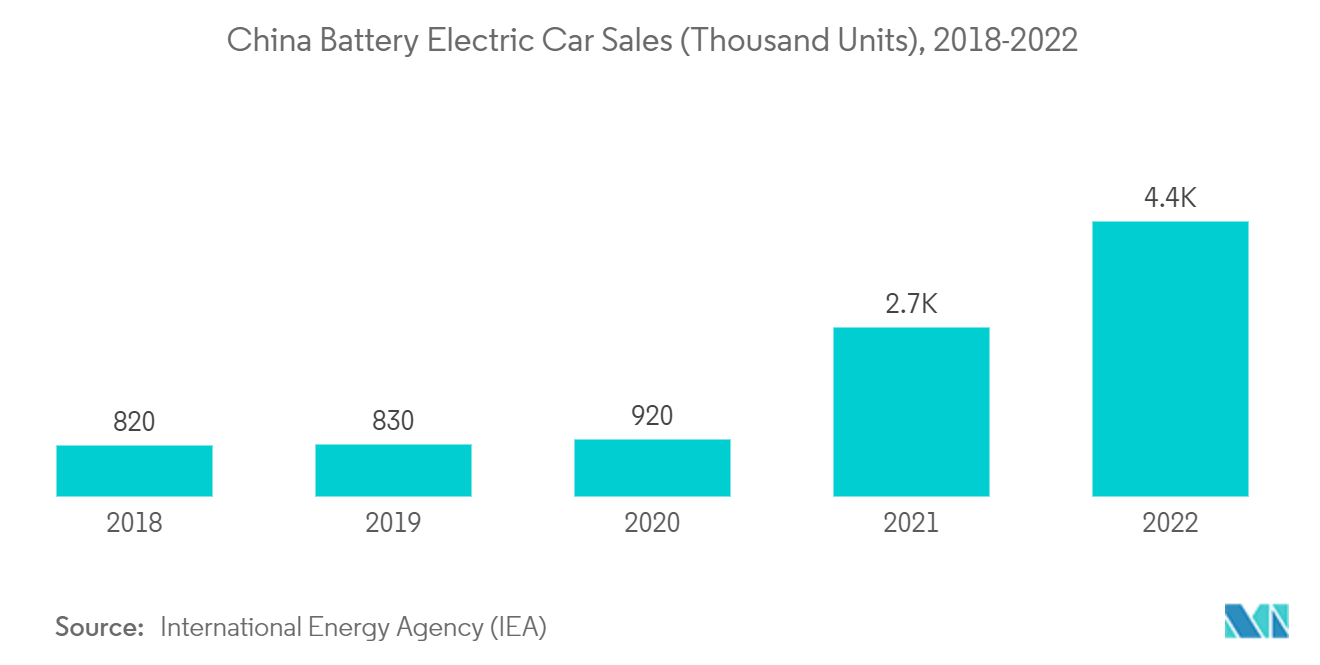Market Trends of China Automotive Composites Industry
Passenger Car Hold Major Growth
China produced 12% of the world's carbon fiber and ranked 3rd in global production. With increasing automotive production, composite material production is expected to boom during the forecasted period.
The production and sales environment of passenger cars is growing rapidly in the country. China's passenger car sales increased year on year in 2023, as greater discounts and tax benefits for environmentally friendly and electric automobiles lifted consumer mood despite slowing economic development.
In June 2023, car manufacturers in China experienced a 9.8% increase in production, reaching a total of 2.56 million units. This figure also represents a 2.5% growth when compared to June 2022. According to recent data released by the China Association of Automobile Manufacturers (CAAM), sales also saw significant improvement, with a month-on-month increase of 10.1% and a year-on-year increase of 4.8% to reach 2.62 million units. These sales numbers represent the highest monthly sales figures since 2022.
China has been the world’s largest car production country. The global passenger cars manufactured in China exceeded the overall share of the European Union. In other car markets, Chinese car brands enjoy a significant cast advantage over imported cars from international automobile manufacturers.
Thus, other developing countries and emerging markets were the main export destinations for Chinese vehicle exports. With rules and regulations changing around the world, Chinese composite material manufacturers are expected to gain momentum for light-weight composite materials manufacturing, this paired with low labor costs and high technological manufacturing this market is expected to boom during the forecasted period.

Battery Electric Vehicles Witnessing Major Growth
The automotive industry has been focusing on vehicle weight for decades as vehicle weight has a direct impact on driving dynamics and fuel consumption. Due to the high cost of potential lightweight solutions and consumers’ limited willingness to pay for weight reduction in automotive, the use of costly lightweight materials has so far been limited.
With an increase in vehicle sales and rapid urbanization, China is determined to reduce exhaust emissions from vehicles. Meanwhile, the country plans to lessen its dependence on oil imports, boosting the demand for and sales of electric vehicles in the country.
Furthermore, many key cities and provinces are imposing more strict restrictions. For instance, Beijing only issues 10,000 permits for the registration of combustion-engine vehicles per month to boost its inhabitants to switch to electric vehicles.
As governments from around the world are implementing stringent emission regulations and are planning to set even higher emissions standards in the coming years, the importance of lightweight materials will increase.
China is one of the leaders in the global automotive fiberglass market with a significant share of 28%. China generates the highest revenue for fiberglass in the Asia-Pacific region. The automotive fiberglass market in the country has a high growth potential driven by a huge increase in the demand for electric vehicles. The growth of this market is also driven by technological developments in the manufacturing process of fiberglass.
Growing government regulations improving electric vehicle adoption and robust expansion adopted by OEMs and suppliers in the region to accommodate rising demand from the automotive industry in China are expected to create a positive outlook for market growth during the forecast period.
With technological advancements, Chinese manufacturers are expected to see a rise in demand for car exports which in turn will increase demand for automotive composites as manufacturers are looking to reduce car weight to keep up with emission norms across the world.
The Chinese government invested in building charging stations across the country to promote electric vehicle sales. For instance, in January 2022, the Chinese government announced plans to build enough charging stations for 20 million electric vehicles by 2025. This is likely to create a lucrative opportunity for automotive composites market across the country in the coming years.


